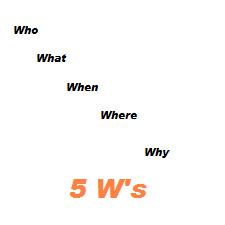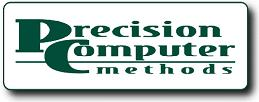One of the most important factors that affect the search engines indexing your web pages for search engine results pages (SERP) positioning and page rank is changing website content. If your pages are published but never updated or changed, you will never be ranked high enough to show up in the first few pages of a SERP.
____________________________________________________________
Tags: SEO | organic search | Paid Search, targetted Marketing, SEO, Web traffic, Search Engine Optimatization, SERP, SEO Authority
I'm sure you have heard the term Blog before, but you may not know what it means. Blog is a word derived from Web and Log. That is, it is similar to an online journal that you can post in addition to your core website. Blogs are created as journals or as soapboxes by many people who don't even have a website, but seem to have something to say.
Tags: Blogging, Blog, Web Content, SEO, Web traffic, SERP, Traffic
One of the easiest and quickest ways of getting traffic to your website is by using Pay-Per-Click (PPC) advertising. The two most popular PPC programs are Google AdWords and Yahoo Search Marketing. To clarify what PPC actually does, you begin by creating short ads that will be displayed on the search engine results pages (SERP) as Sponsored Links. When you create the ad, you are also identifying the keywords that will draw the ad to the SERP.
Tags: SEO | organic search | Paid Search, Web traffic, SERP, Web Optimization, PPC, Pay-Per-Click
In the past several weeks, we have covered the content requirements in order to develop your website as an authority in your field. While this makes sense, sometimes it is difficult to get a handle on how to approach this task of creating perfect content that is appealing to your viewers and at the same time, attractive to the search engines. As a suggestion for organizing your thoughts about content, think of the 5 W's: Who, What, When, Where, Why. When you can answer the 5 W questions, you have covered your content needs. Let's look at the 5 W's individually.
Tags: SEO | organic search | Paid Search, Inbound Marketing, 5 W's, SEO, Search Engine Optimatization, SERP, SEO Authority, Content based Marketing
As you review your website for the attention the search engines will give it and for its authority content, you need to determine if you have a clear call to action. A call to action on your website simply asks your viewer to do something. Are you asking the surfer to call you, to buy your product, to engage your services or simply to subscribe to your future communications? Think carefully about what you want next from your website visitors. This is your call to action (CTA). The purpose of a CTA is to create another contact point for your potential customer. It takes seven encounters on average before your prospect becomes a customer. If you don't ask or create a clear opportunity for your viewer to create a relationship with you and your business, you may not get your additional six contacts for the sale. Beyond the initial sale, you will want to set up an ongoing relationship with your customer. Business is not built on one sale, but on a continuous business relationship where you customer becomes a return purchaser. To build this loyalty, you must continue to place your name and image in front of your customer. Think of it this way: you spend most of your marketing efforts and dollars to get that first customer. When your customer returns for another purchase, you aren't spending much more in follow-up dollars. With techniques we are going to cover in future SEO SOS lessons, you will see that this cost is minimal and, therefore, yields the greatest return on your marketing dollar. Some examples of CTAs might be:
Tags: SEO, Website Traffic, Search Engine Optimatization, SERP, Website Navigation
Your Website's First Impression - SEO SOS #5
Posted by Peter Heinicke on Sun, Jun 17, 2012 @ 11:15 PM
We have focused on keywords for positioning and for content in past lessons. Now we need to look at traffic generation soon. But first, let's consider what a visitor sees when they do arrive at your site. Does your site convey authority on its topic? Does it get to the point of what you do and what you offer right away? Is the navigation logical and easy to understand? Yes, we want traffic; but we want that traffic to stick around, too. Your web statistics will show where a viewer enters your website, where they exit and how long they stay. So you will be able to easily determine the success of how well-like your website it. We'll cover more on web stats in a later SEO SOS lesson. Two things are of paramount importance in your web design: 1) The first impression you make, and 2) The navigation style you use. Let's explore first impressions of a website in this lesson. We've all heard the expression, "You only get one chance to make a first impression." With the breadth and depth of the Internet, this statement couldn't be more important. Factors that impact how well your website is received include:
Tags: SEO, Web traffic, Website Traffic, SERP, SEO Authority, Web Optimization







